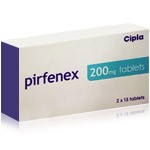Lung Scarring Disease


Progressive lung disease refers to a family of conditions in which injury and scarring in the lungs worsen over time, slowly eroding the lungs’ ability to move oxygen into the bloodstream. People often notice the earliest changes as a creeping shortness of breath on hills or stairs, a dry, hacking cough that will not go away, and fatigue that seems out of proportion to daily activities. Among the progressive lung diseases, idiopathic pulmonary fibrosis (IPF) is the most representative: a chronic, relentlessly scarring interstitial lung disease with no single known cause and a highly variable course from person to person. Clinicians diagnose and follow IPF using a combination of history, high-resolution CT, lung function tests such as forced vital capacity (FVC) and diffusing capacity (DLCO), and sometimes lung biopsy when imaging is not definitive. Although there is no cure for IPF, the last decade has provided therapies that slow decline, broadened our understanding of what “progression” means, and clarified how to tailor care.
Life expectancy in IPF
Historically, IPF carried a sobering prognosis, with median survival after diagnosis in the range of three to five years. That figure continues to appear in modern summaries of the disease. It is important to remember this is a population median, not an individual prediction; some patients decline more rapidly, while others — especially with early diagnosis, expert care, and antifibrotic therapy — maintain lung function for longer. Survival is influenced by age, sex, baseline lung function, comorbidities such as pulmonary hypertension, and acute exacerbations. Early initiation of therapy can improve the outlook in some patients.
The “four diseases of the lungs”
There is no single official list of four lung diseases, but public health authorities often group the major chronic respiratory conditions into four categories: asthma, chronic obstructive pulmonary disease (COPD), occupational lung diseases, and pulmonary hypertension. These illustrate the different ways lung function can be impaired: asthma through inflammation of the airways, COPD through airflow limitation, occupational diseases through parenchymal injury, and pulmonary hypertension through vascular remodeling. IPF belongs to the interstitial lung diseases, a separate family defined by scarring of the lung tissue itself rather than airways or blood vessels. Within this group, IPF is the best-known progressive fibrosing disease.
Stages of IPF
There is no universally accepted four-stage system for IPF. Patient organizations and clinics sometimes describe IPF as mild, moderate, severe, or very severe to communicate where someone is on the spectrum and guide practical decisions such as oxygen use or referral for transplant evaluation. These labels are generally tied to objective measures like FVC percentage, DLCO percentage, six-minute walk distance, and the need for oxygen at rest or with exertion.
In clinical research, the GAP index — Gender, Age, and Physiology — is often used. It stratifies risk into three stages using sex, age, FVC, and DLCO, and helps predict survival. Other indices or composite scores are sometimes applied, but in all cases, staging in IPF is pragmatic: a way to quantify where the patient stands and how quickly things are changing, not a rigid four-step ladder.
What does “progressive IPF” mean?
Progressive IPF usually refers to cases where the disease is actively worsening over time despite appropriate management. Progression is captured by worsening breathlessness and cough, measurable declines in FVC or DLCO, and new or enlarging fibrotic changes on CT scans. A relative decline of 10 percent or more in FVC over one year is considered a particularly strong indicator of progression and is associated with worse outcomes. Smaller declines can also be meaningful, especially when paired with symptoms or imaging evidence of worsening.
Closely related is the newer concept of progressive pulmonary fibrosis, which applies to fibrotic interstitial lung diseases other than IPF that behave in the same relentless way. Defined in guidelines published in 2022, progressive pulmonary fibrosis requires at least two of three features over one year: worsening symptoms, physiologic progression, and radiologic progression, without another explanation. This definition helps clinicians decide when to escalate monitoring and consider antifibrotic therapy even outside of classic IPF.
Pirfenex and the role of pirfenidone in IPF
Pirfenex is a widely used brand name for pirfenidone, an oral antifibrotic approved for the treatment of IPF in many countries. Pirfenidone exerts antifibrotic and anti-inflammatory effects, including modulation of pathways that drive scarring. Clinical trials have demonstrated that pirfenidone slows the decline in lung function. While it does not reverse fibrosis, it has become one of the two main antifibrotics used for IPF alongside nintedanib.
Evidence of benefit
Major studies such as CAPACITY and ASCEND showed that pirfenidone reduced the proportion of patients experiencing large FVC declines or death over one year. It improved progression-free survival and slowed the loss in walking distance. Follow-up analyses have reinforced the consistent treatment effect on slowing lung function decline. While the disease still progresses in many cases, the slope of decline is noticeably flatter for most patients receiving treatment.
How it is taken
Pirfenidone is taken orally and titrated over two weeks to a maintenance dose of 2403 mg per day, divided into three doses. It is taken with food to reduce stomach upset. The titration schedule usually begins with a low dose and steps up each week until the full dose is reached. Clinicians adjust the dose based on how well the patient tolerates the medicine.
Safety and monitoring
Common side effects include nausea, fatigue, loss of appetite, photosensitivity rash, and dizziness. Liver enzyme monitoring is required before starting, monthly for the first six months, and every three months thereafter. Sun protection is strongly recommended. Some drugs interact with pirfenidone, so medication lists must be reviewed carefully. Many patients tolerate pirfenidone well with the right precautions, and those who experience side effects often manage them with dose adjustments.
Place of Pirfenex in therapy
For patients with confirmed IPF, antifibrotic therapy is the standard of care unless contraindicated. In India and some other markets, Pirfenex is a leading brand. Regardless of brand, pirfenidone offers patients more time with preserved function, less risk of rapid decline, and a bridge to other interventions such as pulmonary rehabilitation or lung transplantation. Even if symptoms continue to worsen, staying on therapy may still provide benefits compared with discontinuing.
Living with progressive lung disease
A comprehensive management plan goes beyond medication. Pulmonary rehabilitation helps maintain exercise capacity. Vaccination reduces the risk of respiratory infections. Supplemental oxygen may be introduced as needed, first with exertion and later at rest. Nutrition, sleep quality, and comorbidity management are crucial. For some patients, referral to a transplant center is appropriate. Early discussions about goals of care help patients and families plan ahead.
Conclusion
Idiopathic pulmonary fibrosis is the most well-recognized progressive lung disease, characterized by relentless scarring of the lungs and limited life expectancy, with median survival of three to five years after diagnosis. While there is no formal four-stage system, severity is often described as mild to very severe or stratified with the GAP index. Progression is marked by declines in lung function and worsening symptoms, and the concept of progressive pulmonary fibrosis extends similar criteria to other interstitial lung diseases. Antifibrotic therapy with drugs like pirfenidone, marketed as Pirfenex in some regions, plays a central role in slowing decline, preserving function, and extending survival. Though not a cure, it provides patients with valuable time and helps clinicians build a comprehensive plan of care that addresses both the medical and quality-of-life challenges of progressive lung disease.
Drug Description Sources: U.S. National Library of Medicine, Drugs.com, WebMD, Mayo Clinic, RxList.
Reviewed and Referenced By:
Dr. Ganesh Raghu, MD Professor of Medicine and Director of the Center for Interstitial Lung Diseases at the University of Washington. Internationally recognized expert in idiopathic pulmonary fibrosis (IPF). Contributed to ATS/ERS/JRS/ALAT clinical practice guidelines on the diagnosis and treatment of IPF.
Dr. Athol U. Wells, MD, PhD Consultant Physician at Royal Brompton Hospital, London. Specialist in interstitial lung disease (ILD) and author of numerous peer-reviewed studies on disease progression, prognosis, and antifibrotic therapies such as pirfenidone.
Dr. Harold R. Collard, MD Pulmonologist and clinical researcher at the University of California, San Francisco. Known for defining clinical endpoints in progressive pulmonary fibrosis and co-authoring studies that shaped modern understanding of IPF survival and staging.
Dr. Luca Richeldi, MD, PhD Chair of Respiratory Medicine at Università Cattolica del Sacro Cuore, Rome. Principal investigator in major pirfenidone trials (CAPACITY, ASCEND). Provided authoritative evidence on the benefits of antifibrotics in slowing IPF progression.
Dr. Kevin K. Brown, MD Chief of Clinical and Operations for the Division of Pulmonary, Critical Care and Sleep Medicine at National Jewish Health, Denver. Contributor to multiple international consensus documents on IPF and progressive fibrosing ILDs.
(Updated at Aug 23 / 2025)

